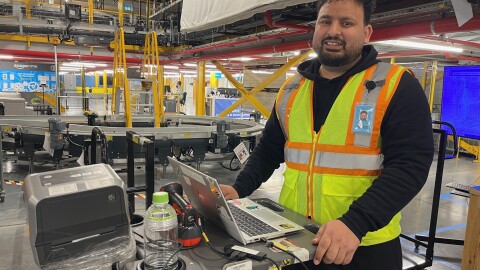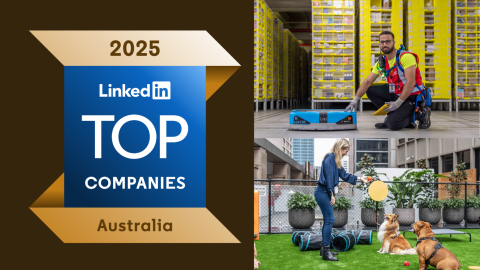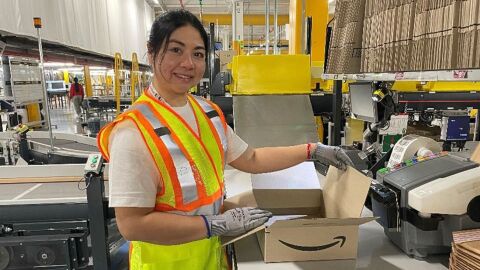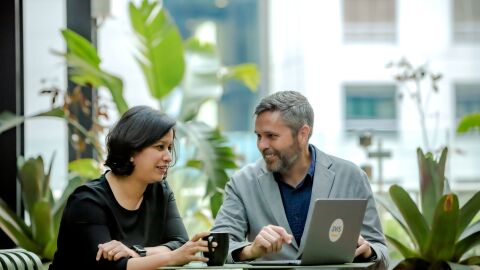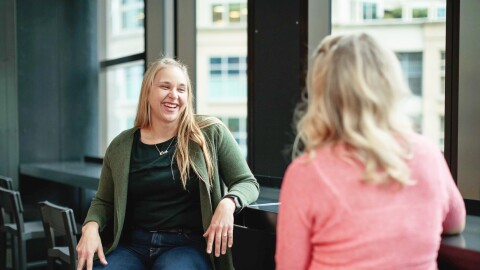I discovered early on how difficult it can be finding a voice as a young woman working in safety.
The first two weeks in my first workplace health and safety (WHS)) role at a Waste Management company were especially instructive. I walked straight out of a role in communications into a room of men for incident investigation training and it was extremely intimidating. I would try to come up with solutions and participate in discussions and people talked over me. It wasn't until the investigation expert intervened and said, ‘Hang on, I think she's onto something here,’ the group listened to me.
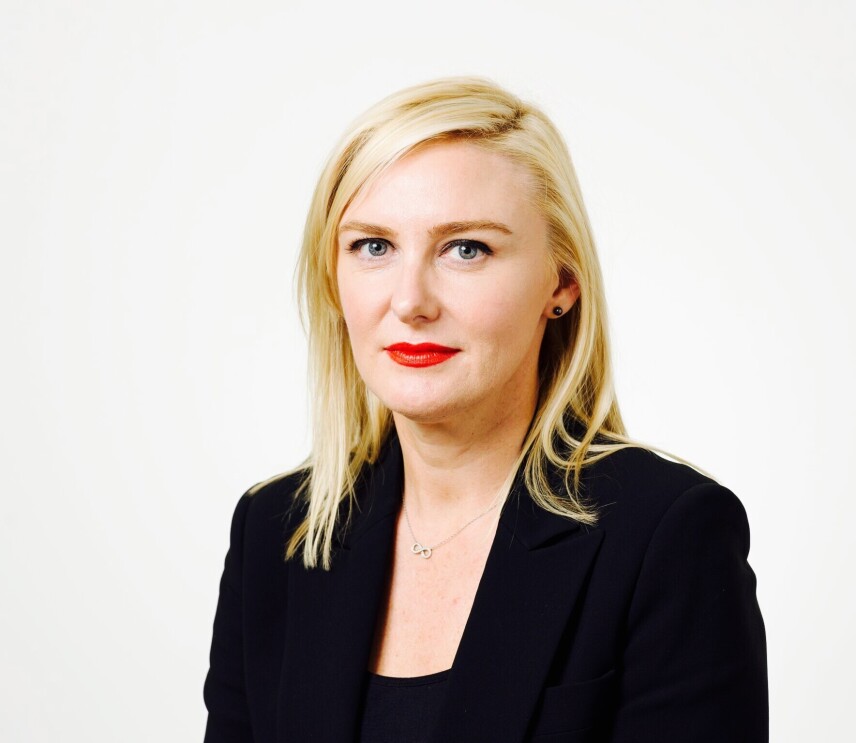
During that period, I also learned safety is all about problem solving, creativity and collaboration, which I love, and which motivated me to stick with it.
I’ve been with Amazon for just over a year, where my role has me exploring the data we are using to drive safety decisions and using it to create world-class workplace health and safety systems for our operations in Australia and across Asia Pacific and other ‘emerging countries’ for Amazon such as Brazil and UAE. I love the variety of my role and the opportunity to work in a company where employee safety is a priority, and truly promotes and celebrates diversity.
Big improvements over time
Thankfully the workplace health and safety profession has come a long way since I joined it. But there's still a way to go in terms of female representation and the variety of industries in which women work in WHS roles.
The findings of recruitment and consulting firm Safesearch’s 2020/21 Health, Safety & Environment Remuneration Survey show male candidates still fill 66 per cent of safety roles. Some industries have more female WHS workers in them than others, with the report showing women have better representation in government, manufacturing and utilities and telcos, and less representation in retail and facilities management.
At Amazon we understand the value of an inclusive workforce, with emphasis on supporting a diverse cohort of workers into WHS positions. We actively recruit top female talent, especially for leadership positions. We also foster an inclusive workplace, not just in terms of gender but across national origin and sexual orientation, as well as education and life experience. Inclusion is also important beyond recruitment; it’s part of our culture day to day.
Seeking out a female perspective
In Australia men are more likely to be technical or trades workers, while women are more likely to be admin and service workers – but this is not always the norm. I often find women working in areas where they are traditionally underrepresented and where I do, I purposely seek to engage them on safety initiatives for their area. For example at Amazon when I need to consult with someone about forklift operations, two of my go-to people for Operator or technical perspectives are women. On the one hand I find I often get a different perspective than from their male counterparts which is beneficial, but I’m also conscious of trying to lift women up, give them a voice and engage them in decision making.
Having a diverse team means we are able to draw on a variety of perspectives and professional life experience across the business. Mixing that with data and the collaborative approach we take in the business can really stimulate innovation and improve the way we work. Our ergonomics solutions are an example where we have custom-designed tables to reduce physical lifting.
On a practical level
We also have a broad range of initiatives to support our focus on diversity. A number of years ago, a group of women working in Amazon’s workplace health and safety function formed an affinity group Women in EHS (WinEHS), the aim of which is to advance women in the business by providing education and mentorship, as well as networking and collaboration opportunities. Women have become well represented across the WHS function, both here in Australia and globally. Heather MacDougall, our Global Vice President of Workplace Health and Safety, is an executive sponsor of WinWHS, promoting membership to women at all levels in WHS.
There’s still lots more we can do in the industry to encourage fair access to opportunity and elevate under represented groups. For example there’s an opportunity for more companies to provide graduate positions for women. There’s also potential for businesses to sponsor women who may not have completed tertiary studies, who are already working in a business and who have demonstrated talent in safety, to enrol in related tertiary education.
As senior women in the field, we must also mentor and coach our younger colleagues. I’ve seen first-hand at Amazon the benefits mentorship can have for women, helping them to build confidence, identify opportunities and build their expertise so they can grow in their careers. Having other women take the time to invest in my development, give me very specific feedback and make sure I had a chance to work on projects to stretch my experience made a huge difference in my career. So, we need to encourage our female colleagues to be part of new projects, bring them into the conversation and make sure they are heard.
That way, when new female hires start in WHS roles they can hit the ground running, without having to break through any glass ceiling to get their job done.



